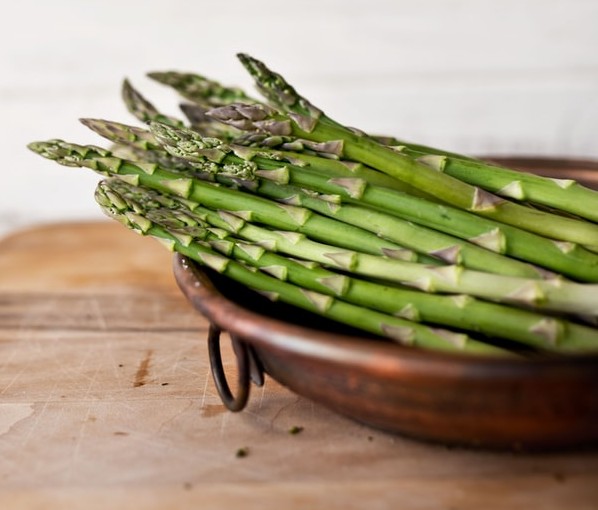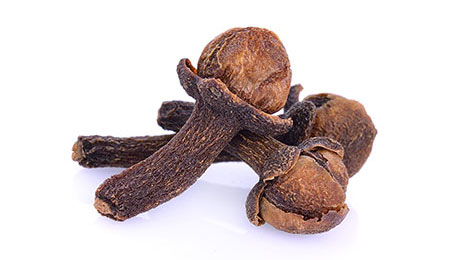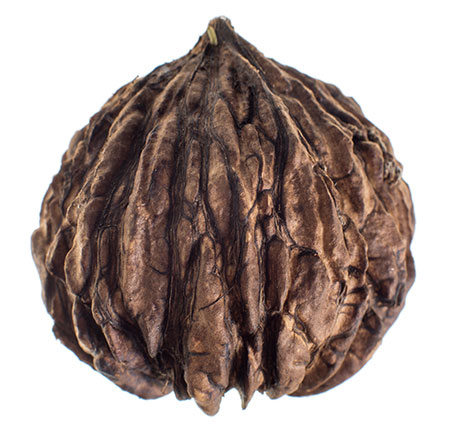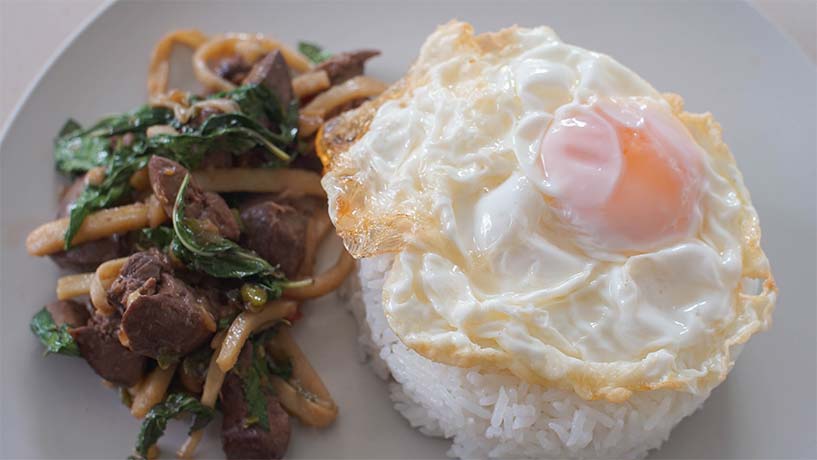The list of top 10 candida anti fungal foods below is refined based on our 20 years of experience helping people with candida overgrowth.
1. Coconut

Coconut is on this list because it contains a healthy fat called caprylic acid. Caprylic acid is a medium chain fatty acid (also known as MCT). If you’ve heard of MCT oil or MCT fats before, that’s what caprylic acid is.
Caprylic acid is a powerful cleansing agent. It stops bad bacteria and yeast from replicating.
Organic fatty acids like MCTs have been used literally since 2,800 B.C. (meaning 4,800 years ago) for their anti-fungal and anti-microbial purposes. That’s why soap was traditionally made from fats and why we use still use them today to clean things.
But it was only in 1961 that scientists in Japan discovered these MCT fats had other uses other than cleaning or washing our hands. That is, you can take them orally to kill off yeast & bad bacteria (aka bad flora) in the gut.
We’ve been recommending coconut milk and coconut oil for over 30 years now.
Back then people thought we were crazy! One doctor said to us, “You guys are nuts giving people coconut oil. They’ll get heart disease and heart attacks from it. It causes bowel problems!”
Now of course we know coconut is healthy. We know fresh butter is good and margarine is toxic. And guess what? That same doctor now many years later is recommending coconut oil as well.
People have been eating coconuts for thousands of years. Coconut oil is a saturated fat, but it’s not like animal fat. It’s a plant-based saturated fat. This fat gets absorbed in the small bowel & doesn’t cause greasy stools like other oils can.
When buying coconut oil, choose one that’s been minimally processed. Look for cold-pressed or virgin coconut oil. One tablespoon a day is all you need.
If you decide to get a supplement that contains caprylic acid, make sure the label also lists “undecenoic acid” & “betaine HCL.” Combine all 3 of these & you get a powerful anti-fungal and anti-bacterial formula.
Also never buy coconut oil cookies or other cheap coconut oil products you find in the supermarket. Most of these contain coconut oil that’s hydrogenated & can cause a lot of damage to your gut wall.
2. Grapefruit

Grapefruit is on this list because the pulp and seeds contain something called GSE.
GSE is Grapefruit seed extract.
Back in 1972, a man named Dr. Jacob Harich discovered that there’s something in GSE that sets it beyond anything else we’ve ever discovered. He had been looking for the world’s strongest substance for sterilizing and cleansing.
And that’s what he thought he found in GSE.
The first to take notice was the food industry because Harich found out GSE could inhibit and kill mold on food.
Then hospitals found out about it and they wanted to use it as an antiseptic to clean wounds. They found it could reduce the risk of infection during surgery. It was even used in municipal pools and Olympic swimming pools because it killed bacteria like E. coli.
Then in 1980, the American Research Institute tested it. And they discovered GSE was so powerful it could kill over 800 kinds of bacteria & over 100 strains of fungi. Of course that’s when the pharmaceutical industry got involved and said “hey that natural stuff is all crap, we’ve got chemicals for that.”
We still tell people to take GSE to this day. Why? Because it works.
And because unlike other drugs, GSE doesn’t harm your beneficial bacteria. It only targets the bad stuff.
You can make you own GSE at home by blending together grapefruit seeds and the white flesh from the rind. A fair warning though: GSE is EXTREMELY bitter. So bitter that most people have trouble gulping it down. That’s why we recommend getting it in tablets vs making it yourself.
For a good Candida supplement that contains high quality GSE, check out our CanXida Remove formula.
3. Garlic

Garlic is one of our favorite foods for gut health because of its potent anti-fungal & anti-bacterial properties. It adds a lot of flavor to foods and helps clean the gut from unwanted bacteria and yeasts.
But what a lot of people don’t know is garlic also boosts beneficial bacteria.
It’s a prebiotic. A 2013 study published in Food Science and Human Wellness proved this. Other studies show that garlic prevents many gastrointestinal diseases.
Same goes for onions, leeks, shallows, chives, and the rest of the Allium family. They all contain special compounds that wipe out fungus and bad bacteria. Eat these foods every day and you’ll notice that your stools will improve. You’ll have better bowel motions.
When purchasing garlic, make sure it’s organic.
Garlic contains sulfur which attracts heavy metals by default. If you eat cheap garlic don’t be surprised if you do a hair analysis one day and discover high levels of lead or cadmium. we’ve seen it many times.
If you’re sensitive to garlic or can’t stand the taste, get a tablet that contains aged garlic extract. Pick one that says “2% allicin standardized” on the label. You may think 2% sounds small but that’s actually a whole lot.
It’s going to wipe out hundreds of different kinds of bad bacteria and 20 different kinds of yeast.
That’s why we put standardized garlic in our CanXida Remove formula.
4. Asparagus, Broccoli, and Cruciferous Vegetables

This includes kale, cabbage, cauliflower, broccoli, boy choy, and many other vegetables.
All these foods are anti-fungal due to their beneficial effect on your gut environment.
Cruciferous vegetables are on this list because they contain glucosinolates. These are sulfur containing compounds that help to break down toxins in the body. They reduce inflammation, and are great for liver detoxification.
They also contain a certain type of fiber called indole-3-carbinol. This is a prebiotic (meaning it feeds your good bacteria) particularly good at building up your levels of lactobacillus. Lactobacillus is one of the two most important strains of beneficial bacteria people with Candida are deficient in.
We used tell all our patients to incorporate these vegetables into their daily diet. They’re quite bitter but they pair well when you cook them with chicken or tofu. They are one of the most important foods you can eat for Candida.
The more cruciferous vegetables you eat, the more your good bacteria will crowd out the bad, and the better you’ll feel. If you’re not used to eating vegetables, you want to start slow and not eat large amounts at once. Give your gut bacteria time to adapt get used to them.
This advice goes for all the foods on this list.
Gut bacteria don’t like sudden swings in diet. They don’t like it when you introduce a new food in high amounts that they’re not used to breaking down. But if you start slow with a tablespoon a day and build it up over a period of several weeks, you can avoid the discomfort.
That’s why we used to tell all our patients to make dietary changes slowly.
If you’re used to eating pizzas, burgers and Chinese takeaway food every day, don’t cut all that out in one day. Never try to go super healthy within 24 hours. It doesn’t matter how healthy the new food is, your bacteria isn’t going to like it. You’re going to get gas and you’re going to get bloating. You might get brain fog or constipation.
So take things slow and don’t make this mistake.
5. Yogurt & Other Cultured and Fermented Foods

Our advice regarding fermented foods is different than what you’ve likely heard elsewhere.
We are not a fan of giving kefir, kombucha or sauerkraut to people with gut problems. We’ve seen too many patients get aggravations from eating these foods when their gut wasn’t in great shape yet.
We’ve seen this with kefir in particular.
If you’re got a dysfunctional gut and you start drinking kefir every day, you can actually create a bigger problem than you’re trying to solve. You can actually get a strain of Candida from kefir.
This is because kefir is a ferment and not a culture. The difference is it contains yeast and not just bacteria like yogurt and other cultures to.
And this yeast can overgrow if you don’t have high levels of beneficial bacteria to keep it under control. We’ve seen this happen many times with stool testing. Same with kombucha. It’s a ferment and ferments can play up your gut if you don’t have high levels of beneficial bacteria yet.
So what foods do you eat instead you ask?
Two of our favorites are miso and tempeh. Tempeh is very effective at increasing your levels of beneficial bacteria. Tempeh is basically tofu that’s been inoculated with friendly bacteria. It’s got an almost meaty like flavor to it.
We know a lot of people out there think eating soy is like pouring toxic nuclear waste into the digestive system. Lots of websites these days tell you to avoid tofu and soy products for gut health. But this isn’t what we’ve observed from working with gut disorder patients and doing thousands of stool tests.
You don’t need to avoid soy products. we’ve seen hundreds of patients recover while eating these foods. The only soy products you should avoid are the highly processed ones full of junk like artificial colors. Regular non-gmo soy beans don’t cause leaky gut or harm your gut in any way.
Other cultured foods that boost beneficial bacteria are buttermilk and yogurt. Look for a natural sour Greek yogurt sourced from full fat grass-fed organic milk. That’s the best kind.
If you’re new to these foods, start with yogurt. Most patients can tolerate yogurt perfectly fine. If you can’t tolerate the cow milk or goat’s milk yogurt, try coconut yogurt. We find it quite tasty and easy to make at home.
Start with these foods and then you can work your way up to kefir and sauerkraut once your health improves.
6. Clove

Another herb very effective against a broad spectrum of yeasts, clove contains a substance called eugenol which a 2009 study at the University of Porto, Portugal, discovered ruptures & destroys yeast cells upon contact.
They also found that it almost entirely prevents Candida Albicans from producing hyphae, which are branching filaments that Candida & other fungi use to penetrate the gut wall & spread to other parts of the body.
Eugenol was even found to be effective against yeast strains that had become resistant to some of the most common anti-fungal drugs used to treat yeast infections.
Due to how bitter clove is in high doses, it can be difficult to consume enough of it to obtain the effects listed above.
That’s why supplementation is recommended.
For a good Candida supplement that contains high quality clove oil, check out our CanXida Remove formula.
7. Oregano Oil

Oregano of the most potent natural anti-fungals discovered. According to research conducted in 2001 at Georgetown University Medical Center, oregano oil, when injected into a culture of Candida, stops the growth of yeast.
What makes this even better is yeast (and candida in particular) can’t develop a resistance against it – meaning it never stops working.
Liquid oregano oil is so potent that two drops on your tongue will turn your face red and make you feel as if you just bit into a ultra-hot pepper.
Avoid liquid filled capsules.
There’s lots of reasons we don’t recommend capsules. The problem with capsules is they release their contents right away once they reach your stomach. You get a high level of action in a short period of time. This is why you experience die-off reactions with certain supplements.
That’s why our CanXida Remove formula (which contains oregano oil along with 11 other antifungals) is in tablet form. This way you can take high amounts of oregano oil and not experience die off.
8. Neem

Neem is an Indian herb rarely found in Candida formulations (but often used in natural soaps, shampoos and toothpastes due to its potent antimicrobial properties).
According to a 2011 study published in the Brazilian Journal of Microbiology, neem extract, even at very low doses, has a very strong anti-fungal effect on a wide range of Candida, aspergillus and microsporum yeast species.
Neem is increasingly being used in the West as a safe and highly effective insecticide and anti-parasitic.
9. Black walnut hull

If you’ve done any research into natural Candida remedies you’ve surely heard of black walnut hull.
Black walnut hull contains a compound called juglone, which according to a 1999 University of Mississippi study is almost as effective at wiping out worms, parasites and yeasts than commercially available chemicals (but without the side effects).
Don’t worry if you’re allergic to nuts. Get a formula with black walnut extract as one of the ingredients and you won’t have any problems.
10. Liver & egg Yolk

Liver & egg yolks are the two foods riches in something called biotin, a sulphur-containing coenzyme (vitamin) produced by the beneficial bacterial in healthy people that halts the growth of Candida and prevents it from maturing into its hyphal & mycelial form (which are very hard to get rid of).
Simply put, biotin keeps Candida in check and stops its mycelia from spreading into the bloodstream.
The interruption of this vicious cycle is crucial if you want a full recovery.
Biotin keeps Candida in check & stops it from spreading. Biotin is known as vitamin H. Candida sufferers are particularly prone to a biotin deficiency.
If you have been battling candida for years and have still got questions then just give us a call at +1 (888) 508-3171 or send us an email at [email protected] and one of our team members will get back to you.